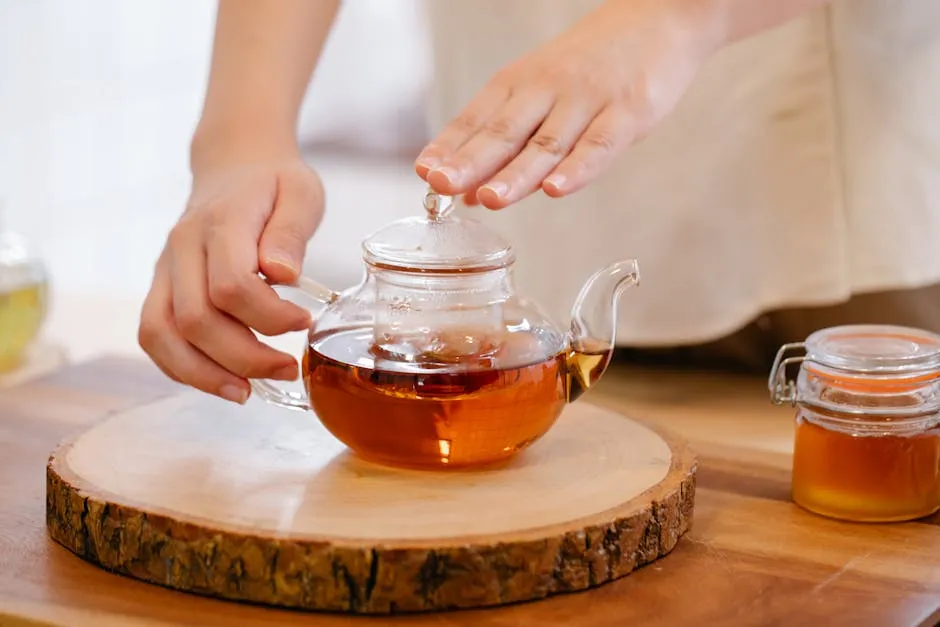
Why Am I Always Cold? Understanding the Reasons Behind Your Chill
What is Cold Intolerance?
Cold intolerance is more than just a fleeting chill. It’s a persistent sensitivity to cold temperatures that can leave you feeling uncomfortable, even in situations where others feel just fine. This condition can cause significant distress, as those affected often find themselves bundled up in layers while friends and family bask in the warmth.
What sets cold intolerance apart from simple cold sensitivity? While most people experience some degree of discomfort in cold environments, cold intolerance can lead to extreme reactions. Individuals may feel cold even in moderately warm settings, making daily activities and social interactions challenging.
This condition is surprisingly common. Many individuals report feeling colder than their peers. It can occur in various situations, such as at work, during outdoor activities, or even in the comfort of home. Factors contributing to this phenomenon include body composition, metabolism, and environmental influences.
Personal variability plays a significant role in cold intolerance. For example, those with lower body fat may find themselves more susceptible to chilly sensations. Additionally, metabolic rates can differ from person to person, affecting how efficiently the body generates and retains heat. Further, environmental conditions, such as humidity and wind chill, can intensify feelings of cold, leading to discomfort.
Understanding cold intolerance is crucial, especially if it disrupts your life. If you find yourself constantly seeking warmth or feeling isolated due to your cold sensitivity, it may be time to investigate the underlying causes. Recognizing the factors contributing to your chill can pave the way for effective management strategies and a more comfortable existence.
In summary, cold intolerance is a condition characterized by an exaggerated reaction to cold. While it varies from person to person, understanding its nuances is essential for identifying potential underlying issues and improving your quality of life. So, embrace your curiosity and let’s uncover the reasons behind your persistent chill!

Medical Conditions Linked to Feeling Cold
Feeling colder than your friends on a sunny day? While some folks simply have a lower tolerance for chill, persistent coldness can signal underlying medical conditions. Let’s uncover some of the culprits behind this frosty phenomenon.
Hypothyroidism
First up is hypothyroidism. This condition occurs when the thyroid gland doesn’t produce enough hormones. These hormones play a crucial role in regulating metabolism and body temperature. When levels drop, your metabolism slows, making you feel colder.
Symptoms of hypothyroidism often include fatigue, weight gain, thinning hair, and dry skin. Women are particularly prone to this condition. A simple blood test can diagnose hypothyroidism by measuring Thyroid-Stimulating Hormone (TSH) levels. Treatment typically involves hormone replacement therapy, which can help restore warmth to your life.
While you’re at it, why not keep warm with a Heated Blanket? Perfect for those days when you just can’t seem to shake off the chill!

Anemia
Next, we have anemia. This condition arises when your body lacks enough healthy red blood cells to transport oxygen efficiently. There are several types, but iron-deficiency anemia and vitamin B12 deficiency are the most common.
Symptoms of anemia include fatigue, weakness, pale skin, and of course, feeling chilly, especially in your hands and feet. Dietary recommendations for iron-deficiency anemia include red meat, leafy greens, and fortified cereals. For vitamin B12 deficiency, consider adding eggs, dairy, and fish to your plate. If you suspect anemia, consult your doctor for blood tests and tailored dietary advice.
Speaking of warmth, a nice cup of Ginger Tea can be soothing and can help you feel warmer from the inside out!

Diabetes and Peripheral Neuropathy
Diabetes can also leave you feeling cold. High blood sugar levels can damage blood vessels and nerves, leading to poor circulation. Peripheral neuropathy, a common complication, causes numbness, tingling, and cold sensations in the extremities.
Management strategies include maintaining stable blood sugar levels through diet, exercise, and medication. Regular check-ups are vital to monitor your condition and prevent complications. If you notice your feet feeling particularly frosty, it might be time to check in with your healthcare provider.

Raynaud’s Phenomenon
Raynaud’s phenomenon is another contender. This condition causes blood vessels in fingers and toes to constrict excessively in response to cold or stress. As a result, affected areas can turn white or blue and feel icy.
Management techniques include avoiding cold exposure and stress. Wearing gloves, socks, and warm layers can help. In severe cases, medications may be prescribed to improve blood flow. And hey, why not keep those toes warm with a pair of Warm Socks?

Other Conditions
Several other conditions can contribute to feeling cold. Anorexia nervosa, for instance, leads to significant weight loss and low body fat, which reduces insulation. Chronic kidney disease can also cause cold sensations due to anemia and other factors. Heart failure can affect circulation, making extremities feel chilly as blood flow is redirected to vital organs.
For those experiencing these symptoms, a visit to the doctor is essential. They may recommend blood tests, imaging, or lifestyle changes based on your specific situation.
In conclusion, chronic cold sensations can stem from various medical conditions. If you find yourself shivering frequently or experiencing other concerning symptoms, don’t hesitate to seek medical advice. Understanding the underlying cause is the first step toward feeling warmer and more comfortable in your own skin.

Lifestyle Factors Contributing to Cold Sensitivity
Sleep Deprivation
Sleep deprivation affects more than just your mood; it can also leave you feeling cold. When you’re short on sleep, your body’s thermoregulation takes a hit. This means your ability to maintain a stable body temperature dips. As a result, you may find yourself shivering even when others are comfortable.
Lack of sleep hampers your body’s ability to generate heat. Chronic sleep deprivation can lead to increased heat loss, making you more sensitive to cooler environments. So, what can you do to improve your sleep hygiene and fend off those cold chills?
- Create a Sleep Schedule: Stick to a regular sleep routine. Go to bed and wake up at the same time every day.
- Limit Screen Time: Reduce exposure to screens at least an hour before bed. Blue light interferes with your ability to fall asleep.
- Create a Cozy Environment: Make your bedroom a sanctuary. Keep it dark, cool, and quiet to promote restful sleep.
- Watch Your Caffeine Intake: Avoid caffeine after noon. It can keep you wired when you should be winding down.
- Stay Active: Regular exercise can help improve your sleep quality. Just remember to finish exercising a few hours before bedtime.
Improving your sleep hygiene can help you feel warmer and more comfortable during the day. For those who love a cozy touch, consider a Weighted Blanket to snuggle up with while you drift off to dreamland!

Nutrition and Hydration
What you eat and drink significantly impacts your body temperature. A well-balanced diet plays a crucial role in maintaining your core temperature. When your body lacks essential nutrients, it struggles to generate heat, leaving you feeling chilly.
Proper hydration is equally important. Water helps regulate body temperature, so dehydration can make you feel colder. If you’re not fueling your body adequately, it may respond with cold sensations. Here are some suggestions to keep your nutrition and hydration on point:
- Eat Balanced Meals: Focus on a mix of proteins, healthy fats, and carbohydrates. Include plenty of fruits, vegetables, whole grains, and lean proteins.
- Stay Hydrated: Aim for at least eight glasses of water a day. Increase your intake if you’re physically active or in hot weather.
- Warm Up with Hot Foods: Consuming warm meals, like soups and stews, can raise your internal temperature. Plus, they’re comforting on a cold day! A Soup Maker can make this a breeze!
- Include Iron-Rich Foods: Incorporate foods like spinach, beans, and red meat to prevent anemia, which can cause coldness.
- Don’t Skip Meals: Regular meals keep your metabolism active and help maintain body warmth. Skipping meals can lead to lower body temperatures.
By ensuring you nourish and hydrate your body properly, you can help fend off those cold feelings and keep your warmth in check. And for those on the go, an Insulated Water Bottle can keep your drinks hot or cold for hours!

Strategies to Stay Warm
Feeling like a human popsicle? Don’t worry! There are plenty of strategies to help you warm up and feel cozy, even if you’re one of those people who seem to be perpetually cold. Here are some practical tips and lifestyle changes to consider:
Practical Tips
- Layer Up: The best way to combat the cold is by layering your clothing. Start with a snug base layer, add a warm middle layer, and top it off with a cozy outer layer. Think thermal underwear, a soft sweater, and a stylish coat! Don’t forget accessories like scarves, gloves, and hats—they can make a world of difference. A Cozy Sweater is a great choice!
- Heated Items: Consider investing in heated blankets, socks, or even seat warmers for your car. These heated items can be lifesavers when you’re feeling chilly. Just imagine snuggling under a warm blanket while sipping hot cocoa—pure bliss!
- Warm Foods and Drinks: What you eat can impact how warm you feel. Incorporate warming foods into your diet, such as soups, stews, and hot beverages. Spices like ginger and cayenne pepper can help warm you from the inside out. So, whip up a hearty chili or enjoy a cup of Herbal Tea Sampler to keep the chills at bay!
- Hydration: Staying hydrated is crucial for maintaining your body temperature. Drinking warm water or herbal teas can help you feel warmer. Plus, hydration supports overall health, including circulation, which is essential for keeping those cold extremities cozy.
- Warm Up Your Space: If you can control the temperature in your environment, adjust the thermostat to a comfortable level. Use space heaters in frequently used rooms. Ensure your home is well-insulated to keep the warmth in and the chill out. A Space Heater can make a huge difference!

Lifestyle Changes
- Regular Exercise: Get moving! Regular exercise boosts circulation, which can help you feel warmer. Even a brisk walk or a quick workout can stimulate your blood flow and increase your body temperature. Plus, exercise releases endorphins, which can elevate your mood—talk about a win-win!
- Stay Hydrated: We can’t stress this enough. Proper hydration helps your body maintain its temperature. Aim for at least eight glasses of water a day. If you’re active or the weather’s hot, increase your intake. Hydration keeps your blood flowing smoothly, ensuring warmth reaches all parts of your body.
- Sleep Well: A good night’s sleep is vital for your overall health, including temperature regulation. Aim for 7-9 hours of quality sleep each night. Poor sleep can disrupt your body’s ability to regulate temperature, leaving you feeling colder during the day.
- Avoid Skipping Meals: Eating regular meals keeps your metabolism active. If you skip meals, your body may conserve energy, leading to feelings of cold. So, enjoy balanced meals and snacks throughout the day to maintain your energy levels and warmth.
- Dress for Success: Don’t underestimate the power of good clothing. Wear thermal socks, insulated boots, and cozy pajamas. Fleece-lined leggings are a fashion choice that can keep you warm without sacrificing style. Check out these Fleece-lined Leggings for a trendy yet warm option!

By incorporating these strategies into your daily routine, you’ll be well on your way to feeling toasty and warm, no matter the temperature outside! So, bundle up, sip on something warm, and embrace the cozy vibes.
FAQs
Please let us know what you think about our content by leaving a comment down below!
Thank you for reading till here 🙂
All images from Pexels




